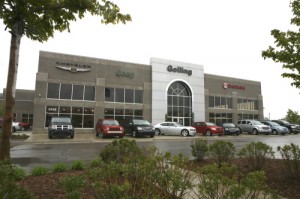Faced with bitter cold weather that has cut into new cars sales in New England and put key automotive hubs in the Southeast, such as Atlanta and Charlotte, into the deep freeze, car sales appear to have held their own during February, analysts said.
“The industry had a great start to 2015 in January, and that sales momentum continues in February with exceptional growth in retail sales,” said John Humphrey, senior vice president of the global automotive practice at J.D. Power.
Humphrey noted that automakers continue to take advantage of strong residual values to provide attractive lease deals for consumers. Lease penetration through the first 11 selling days in February is 27.4% of retail, its highest level ever and the amount of capital sunk in automotive financing has now reached record levels, according to a new study released last week.
The compact SUV segment is leading the industry in retail sales for a fifth consecutive month, accounting for 15.2% of retail sales thus far in February, while the midsize car segment continues to struggle, slipping to fourth in sales volume behind the compact SUV, compact car and midsize SUV segments, Humphrey said.
Total new light-vehicle sales in February 2015 are expected to reach 1.3 million units, a 9% increase compared with February 2014, and match the high for the month set in February 2002. Fleet volume in February is projected to hit 264,000 units, accounting for 20% of total sales, he added.
“Strong February auto sales signal a very healthy U.S. economy,” said Eric Lyman, vice president of industry insights for TrueCar. “Given this month’s robust demand, the industry remains on track to hit TrueCar’s 17 million-unit projection for the 2015.”
With GDP expanding for a third consecutive quarter and a healthy stock market – the Dow Jones industrial average has gained 12% in the past year as of Feb. 20 – the U.S. economy is on solid footing. Additionally, sustained low gas prices continue to buoy consumer confidence and support increased personal consumption expenditures, Lyman said.
Incentive spending by automakers averaged $2,623 per vehicle in February, down 2.9% from a year ago and up 1.4% over January 2015.
Lyman also noted the outlook for 2015 auto sales and U.S. economic expansion is upbeat, this month’s disruption in operations at West Coast ports may have some impact. A preliminary resolution between workers and port operators was announced over the weekend after a dispute that slowed shipments of parts and imported vehicles to some automakers.
February auto sales appear unaffected even though several Japan-based manufacturers, such as Honda, Toyota and Subaru, curbed production this month, a move that may tighten March inventories, he said.
(Study forecasts three more years of automotive growth. For more, Click Here.)
TrueCar also expects registration mix of 81.8% retail sales and 18.2% fleet versus 80.7% retail and 19.3% fleet last February and total used auto sales, including franchise and independent dealerships and private party transactions, may exceed 3,315,654, up 1.5% compared with February 2014.
“Strength at the start of 2015 is a key factor in keeping the industry on target to surpass annual vehicle sales of 17 million units for the first time since 2001,” said Jeff Schuster, senior vice president of forecasting at LMC Automotive. “Given all the positive factors, including the economy, gas prices and fresh new products in showrooms, rain clouds are expected to stay out of the auto sales forecast for the duration of 2015.”
(Click Here for details about auto loans at all-time highs.)
Light-vehicle production in January increased 3% to 1.3 million units, compared with January 2014. While most automakers worked around the West Coast port strike by using air freight and reducing overtime, there are some cutbacks in production. February 2015 production is expected to drop to 1.3 million units, a 3% decline from February 2014. LMC Automotive forecasts that 2015 production will finish at 17.5 million, a 3% gain from 2014.
Ahead of the spring selling season, inventory levels increased to an 82-day supply at the beginning of February 2015, up from 61 days at the beginning of January and still below the 88-day supply at the start of February 2014, according to LMC’s analysis.
(To see more about impact of the end of the dockworkers strike on automakers, Click Here.)
Inventories of some Japanese brands, notably Honda and Subaru, are expected to be even tighter because of the impact of the recently ended dockworkers strike on the West Coast. The work stoppage put a crimp in the production levels of some U.S. factories of Asian brands.

